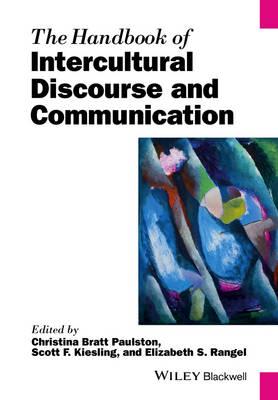Full Product Details
Author: Christina Bratt Paulston (University of Pittsburgh, USA) ,
Scott F. Kiesling (University of Pittsburgh, USA) ,
Elizabeth S. Rangel (University of Pittsburgh, USA)
Publisher: John Wiley and Sons Ltd
Imprint: Wiley-Blackwell
Dimensions:
Width: 17.30cm
, Height: 2.50cm
, Length: 24.60cm
Weight: 0.839kg
ISBN: 9781118941287
ISBN 10: 1118941284
Pages: 560
Publication Date: 29 August 2014
Audience:
Professional and scholarly
,
Professional & Vocational
Format: Paperback
Publisher's Status: Active
Availability: Out of stock

The supplier is temporarily out of stock of this item. It will be ordered for you on backorder and shipped when it becomes available.
Reviews
Rarely does a book of this significance appear in the field of Intercultural Communication. This handbook provides the most sophisticated understanding so far of language processes in intercultural interactions. ? Min-Sun Kim, University of Hawaii ?This panoramic survey of work on discourse and intercultural communication is destined to become a classic. The articles in it, all by renowned researchers, present state of the art scholarship on a wide range of topics from the micro-dynamics of situated interaction to broader theoretical debates on the relationship between language and culture.? ? Rodney Jones, City University of Hong Kong
It is a blessing that bibliography follows each chapter where it can be quite use-ful, rather than being amassed at the end of the book. ( The Delta Intercultural Academy , 1 December 2012) In sum, The Handbook of Intercultural Discourse and Communication promises to be a stimulating resource with the potential to inform and to invite debate, inspiring and equipping readers to ponder recent and enduring issues anew. ( Linguist List , 17 November 2012) This book provides a rich and diverse sampling of the intercultural work going on from various linguistic perspectives, some authors being more reliant on established intercultural theory and practice and others resisting it. ( D ialogin , 1 October 2011)
This book provides a rich and diverse sampling of the intercultural work going on from various linguistic perspectives, some authors being more reliant on established intercultural theory and practice and others resisting it. ( D ialogin , 1 October 2011) In sum, The Handbook of Intercultural Discourse and Communication promises to be a stimulating resource with the potential to inform and to invite debate, inspiring and equipping readers to ponder recent and enduring issues anew. ( Linguist List , 17 November 2012) This book provides a rich and diverse sampling of the intercultural work going on from various linguistic perspectives, some authors being more reliant on established intercultural theory and practice and others resisting it. ( D ialogin , 1 October 2011) It is a blessing that bibliography follows each chapter where it can be quite use-ful, rather than being amassed at the end of the book. ( The Delta Intercultural Academy , 1 December 2012) In sum, The Handbook of Intercultural Discourse and Communication promises to be a stimulating resource with the potential to inform and to invite debate, inspiring and equipping readers to ponder recent and enduring issues anew. ( Linguist List , 17 November 2012) This book provides a rich and diverse sampling of the intercultural work going on from various linguistic perspectives, some authors being more reliant on established intercultural theory and practice and others resisting it. ( D ialogin , 1 October 2011)
Author Information
Scott F. Kiesling is Associate Professor of Linguistics at the University of Pittsburgh. His publications include the books Linguistic Variation and Change (2011) and Intercultural Discourse and Communication: The Essential Readings (Wiley-Blackwell 2005, co-edited with Christina Bratt Paulston). Christina Bratt Paulston is Professor Emerita of Linguistics at the University of Pittsburgh. Her numerous publications include Intercultural Discourse and Communication: The Essential Readings (Wiley-Blackwell 2005, co-edited with Scott F. Kiesling), Sociolinguistics: The Essential Readings (Blackwell 2003, co-edited with G. Richard Tucker), and Sociolinguistic Perspectives on Bilingual Education (1992). Elizabeth S. Rangel is Research Associate at Learning Research and Development Center (LRDC), a Cognitive Science Research Institute at the University of Pittsburgh. Her most recent publications include chapters in the third edition of the International Encyclopedia of Education (2010), and Innovative Learning Environments from the Organization for Economic Co-Operation and Development (2010).




